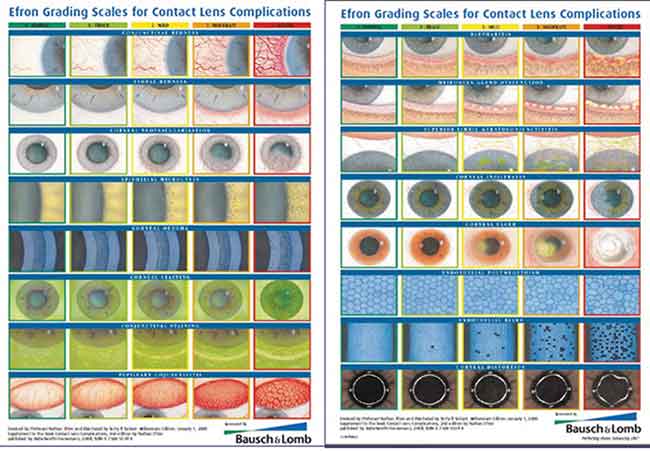With this short paper, we mark our 20th consecutive annual survey of contact lens prescribing in the UK. This work was initiated in the mid 1990s to try to monitor the then recently launched daily disposable lens modality, and because we have used the same basic approach since inception, we have a powerful dataset to reflect on changes in prescribing habits over time in addition to examining the results from individual years.1-19
In January 2015 we randomly selected 1,000 registered practitioners (700 optometrists and 300 contact lens opticians) from the GOC register and sent a single page A4 questionnaire to each. We asked the recipients to record information about the first 10 patients prescribed contact lenses after receipt of the survey. We requested data about the following: date of fitting, new fit or refit, age and sex of patient, lens material, lens design, frequency of replacement, days per week of wear, modality (daily or extended wear) and care system. A weighting system was employed to account for the volume of activity undertaken by the respondents, as judged by the time period required to achieve 10 fits.
We received information about 633 contact lens fits from 34 contact lens opticians, 33 optometrists and two undefined practitioners (69 practitioners in total). The mean age at fitting continues to be in the upper 30s (37.9 ± 16.4 years) with a range in fitting age from six to 82 years, and most fits (61 per cent) were to women.
Rigid vs soft lens fits
Soft lenses remain the most widely fitted lens type, representing 94 per cent of new fits and 91 per cent of refits (ie lens fits when the patient is already a current contact lens wearer) (Figure 1).
[CaptionComponent="1679"]Soft lens details
Silicone hydrogels remain the most widely prescribed material although their use has fallen for the first time to 64 per cent of new fits and 69 per cent of refits. The remaining soft lens types are approximately evenly split between mid-water and high-water lenses. Spherical lenses now only account for 37 per cent of new lens fits, with very significant numbers of torics and multifocals also prescribed. If the analysis is limited only to patients aged 45 or over, the increasing uptake of multifocals over time is clear (Figure 2). As recently as 10 years ago, only about 20 per cent of presbyopic fits were with multifocals compared to around 40 per cent now. The use of monovision correction has remained reasonably stable at around 10-20 per cent of fits over this period. However, around half of all presbyopes are still receiving some form of ‘single vision’ distance correction.
Our survey found that daily disposables reached a 20-year high in terms of their use for new fits at 55 per cent; over half of all refits are also with this lens type. In fact, if only spherical daily wear lens fits are considered, 71 per cent are with daily disposables.
Rigid lens details
The relatively small number of rigid lens fits means that while a detailed breakdown of lens types is of interest, the statistical confidence intervals around each sub-category data point are large, so some caution should be applied when considering individual figures. However, the use of both scleral lenses and orthokeratology designs may be indicative of some renewed interest in these lens types.
References
1 Morgan PB. Trends in UK contact lens prescribing 2014. Optician 2014; 248 (6468): 28-29.
2 Morgan PB. Trends in UK contact lens prescribing 2013. Optician 2013; 246 (6418): 16-17.
3 Morgan PB. Trends in UK contact lens prescribing 2012. Optician 2012; 244 (6364): 14-15.
4 Morgan PB. Trends in UK contact lens prescribing 2011. Optician 2011; 242 (6313): 14-15.
5 Morgan PB. Trends in UK contact lens prescribing 2010. Optician 2010; 239 (6255): 34-35.
6 Morgan PB. Trends in UK contact lens prescribing 2009. Optician 2009; 238 (6205): 20-21.
7 Morgan PB. Trends in UK contact lens prescribing 2008. Optician 2008; 235(6154): 18-19.
8 Morgan PB. Trends in UK contact lens prescribing 2007. Optician 2007; 233(6104): 16-17.
9 Morgan PB. Trends in UK contact lens prescribing 2006. Optician 2006; 231(6054): 16-17.
10 Morgan PB, Efron N. Trends in UK contact lens prescribing 2005. Optician 2005; 229(6004): 28-29.
11 Morgan PB and Efron N. Trends in UK contact lens prescribing 2004. Optician 2004; 227(5950): 16-17.
12 Morgan PB, Efron N. Trends in UK contact lens prescribing 2003. Optician 2003; 225 (5904): 34-35.
13 Morgan PB, Efron N. Trends in UK contact lens prescribing 2002. Optician 2002; 223 (5849): 28-30.
14 Morgan PB and Efron N. Trends in UK contact lens prescribing 2001. Optician 2002; 221 (5803): 38-39.
15 Morgan PB and Efron N. Trends in UK contact lens prescribing 2000. Optician 2000; 219 (5749): 22-23.
16 Morgan PB and Efron N. Trends in UK contact lens prescribing 1999. Optician 1999; 217 (5700): 43-44.
17 Morgan PB and Efron N. Trends in UK contact lens prescribing 1998 Optician 1998; 216 (5679): 18-19.
18 Morgan PB and Efron N. Trends in UK contact lens prescribing 1997. Optician 1997; 214 (5630): 32-33.
19 Morgan PB, Ramsdale C and Efron N. Trends in UK contact lens prescribing 1996. Optician 1997; 213 (5583): 35-36.
Philip Morgan is Professor of Optometry and Director of Eurolens Research at The University of Manchester

